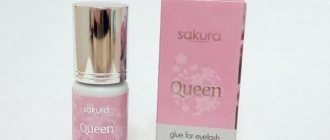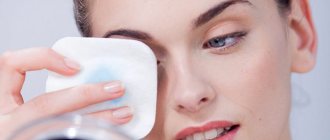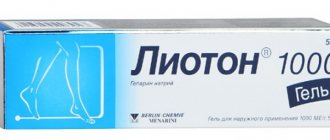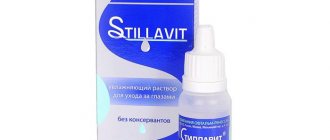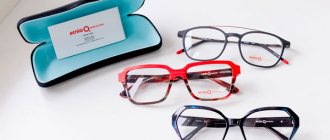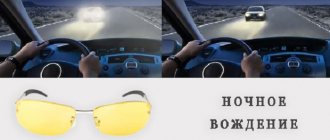Driver points rating
Our team considered time-tested manufacturing companies. Experienced car owners and drivers with extensive driving experience took part in the selection of nominees. It was their knowledge that weeded out goods of dubious quality. Next, we assessed the remaining ones for a number of characteristics:
- Type of glasses;
- Glass color;
- Materials;
- Additional anti-glare coating;
- Level of protection against UV rays;
- Level of light transmittance, tinting;
- Glass size, viewing angle;
- Lightweight, strong support;
- Correct fastening of the earhooks;
- Price, performance.
The result of the comparative analysis was a top list of 8 positions. For convenience, we have divided it into 3 categories - these are anti-glare, polarized models, and anti-headlight glasses. Reviews from customers and owners determined what strengths and weaknesses each product has.
The best anti-glare glasses for drivers
The first category of glasses rating for drivers represents models with anti-reflective coating. Their main function is to protect against the reflection of flickering, shiny objects - headlights of oncoming cars, wet asphalt, windshield. According to VyborExpert, 2 nominees became the best.
HD Vision Wrap Arounds
The first position is occupied by yellow glasses for unisex drivers, harmonizing colors and pictures. Intended for use both during the day and at night. Manufacturer: Chinese.
The lenses are made of flexible oval-shaped plastic. Anti-glare tinting coating, enhanced with a UV filter. The design is rimmed with a plastic frame in black color, combined with yellow glasses. In addition to protection from bright glare, contrast increases in rainy weather, fog, and snowfall.
Lightweight, comfortable, they are combined with corrective glasses with diopters. They fit comfortably over the plastic frames of vision glasses and do not exert pressure. Even xenon headlights are protected from glare.
Advantages:
- Anti-glare coating;
- Tinting;
- Light filter;
- Good fit on the frame with diopters;
- Effective against xenon headlights;
- Lightness.
Flaws:
- Opaque side panels;
- Polarization is minimal.
The product comes with a case and a special cloth to wipe away dust and other contaminants. A bonus is protection from the wind. Folding arms make storage easy, saving space.
Grand Voyage 1701
The second position is occupied by stylish yellow glasses without diopters, guaranteeing 100% UV protection. Glare reduction is provided by the polarizing coating. Manufacturer: Chinese brand “Grand Voyage”.
The oval lenses are made of plastic, the silver frame is made of metal with rubberized temples for a strong fit. Ultraviolet coating against sun rays, tinting to adjust light transmission, anti-glare against glare. The design is rim-shaped, any lenses can be inserted inside it.
This model imitates regular sunglasses in appearance. Thanks to this design, it is suitable for both women and men and can be combined with different clothing styles.
Advantages:
- Design;
- Versatility;
- Alternative to sunglasses;
- Comfortable frame;
- High UV protection;
- Inexpensive.
Flaws:
- Prolonged wearing puts pressure on the bridge of the nose;
- More comfortable in the evening than during the day.
You can use this accessory against the glare of wet asphalt, oncoming headlights, during twilight, precipitation, and fog. It reduces stress, fatigue, and normalizes the condition of eye tissue. Metal frames can be stressful when worn for a long time.
Limited use of tinted lenses
Anyone who tries to search for “night driving glasses” or “night driving glasses” on the Internet will find a huge number of offers of similar products from domestic and foreign distributors. Here are some examples:
“These incredible night glasses were designed specifically for night driving. Special window tinting allows you to see further, better, clearer and makes tiring night trips easier. Order these night glasses right now, because the need for an overnight trip can arise at any moment” (www.euroshop.ce.ru).
“Among the variety of spectacle lenses, there are also... spectacle lenses for evening and night driving (special coatings developed by the Russian company Lornet-M).”
– “Relaxation driving glasses are specially designed both for driving in poor visibility conditions (fog, rain) and for night driving (with an “anti-headlight” effect). Lenses-light filters for driver's glasses provide a significant increase in the contrast sensitivity of the eye (30–35%) and are effective in reducing the level of glare from the headlights of oncoming traffic" (www.prizyv.ru).
– “Night Vision Clip-On Glasses. Improve your vision, reduce glare, and sharpen your eyesight at night with our Night Vision Glasses. Thanks to the amber lens of these Night Vision glasses, you'll not only cut the glare, but also the risk of accidents" (www.amazon.com). - “Polarized Sunglasses improve your night and distance vision, enhance your perception and eliminate eyestrain. Unique sunglasses utilizing technology developed by NASA scientists. Regular price: $29.95. Sale price: $19.95" (4-asseenontv.stores.yahoo.net). The proposed “night driving glasses” are equipped with yellow lenses, which cut off the short-wave blue component of the visible spectrum, or amber lenses, which cut off the blue region and reduce the light transmission of the lenses in the rest of the spectrum, or polarized lenses.
How justified is their use at night? Let us remind you that according to the international standard ISO 14889, the use of spectacle lenses with a light transmittance of less than 75% is not allowed at night. Unfortunately, most proposed “night driving glasses” do not provide relevant data, but the limitations of the standards limit the number of possible options. Therefore, only very lightly colored glasses should be used, since even a small amount of light absorption will reduce the amount of light reaching the driver's eyes. Due to the increase in contrast, objects on the road in the area of car headlights appear clearer, giving the driver the impression that he sees objects at a greater distance. This is not true and may lead to an incorrect assessment of the traffic situation. The literature7 indicates that “yellow night driving lenses” do not provide any benefit for night vision. Moreover, they are even dangerous, as they give the driver a false impression that he sees better. Studies have shown that these lenses interfere with visual performance and slow vision recovery after blinding.
Many manufacturers and distributors actively offer such glasses for night driving, claiming that amber lenses improve night vision. However, the US Federal Trade Commission has indicated that such activities are illegal, since the effectiveness of the lenses in the above cases has not been proven.8 However, some foreign optometrists do not object to the use of yellow glasses, but believe that young drivers can use them on well-lit roads, such as in the city, and should be removed if the road is poorly lit. In older drivers, the pupil itself lets in less light, so for them, reducing the amount of light entering even more will not help them see in the dark. The assortment includes lenses with antireflective coating: “Brown AL” (light absorption 10%), “Brown A” (15%), “Green A” (15%), “Grey AL” (10%), “Blue A” ( 15%), “Rose AL” (10%) and another lenses of five shades (violet, pink, light blue, amethyst and purple) of the “Fashion Sphere” series with a light absorption of less than 20%, which can be used when driving at night. For these purposes, European ophthalmologists recommend wearing glasses with yellow and pink lenses. Safe Life yellow lenses enhance contrast and reduce glare from bright lights. Glasses with such lenses are recommended for driving at night. Pink and purple lenses increase contrast in the evening, cutting off the blue component of the spectrum. They are also approved for use when driving at night.9
The use of polarized glasses at night is generally unacceptable. According to the data, the light transmittance of a high-quality polarizer cannot exceed 44%, which makes polarized lenses unsuitable for night driving. Manufacturers of night driving glasses indicate that their products protect the eyes from being dazzled by the headlights of oncoming vehicles. However, glasses suitable for driving in the dark with 80% light transmittance only cut off the radiation of the blue part of the visible spectrum. Their effectiveness would be justified to some extent if the headlights of the oncoming car were blue. However, blue-enriched light is provided only by xenon headlights, which are already widely used in the West. They differ from halogen and conventional headlights in their greater light flow and illumination angle, and less glare. Xenon headlights are much more expensive than regular ones. Responsible opticians will not recommend the use of tinted lenses, polarized lenses, or photochromic lenses with residual light absorption for night driving, nor will they participate in the promotion of “glasses for night driving.”10 The Sunglass Association of America (SAA) does not recommend the use of sunglasses glasses for night driving. Although amber lenses may provide greater driver comfort, they reduce visibility on unlit roads.
The best anti-headlight glasses for drivers
Anti-headlight glasses for drivers are another current type, which is why it is included in the third category of the rating. You can wear it at any time of the day, but if there is no polarization, it will be more comfortable in the evening and at night. This type of optics promises increased contrast, protection from glare, and prevention of eye fatigue.
SPG Premium AD063
The sixth top ranking is represented by a nominee imitating teardrop-shaped sunglasses. It received good marks for its high impact resistance and versatility. Country of origin: Russia.
The first thing that catches your eye is the thin, elegant frame. The rim design is made of durable metal. Oval yellow plastic lenses. Driver safety is guaranteed by a UV filter in the UVB-UVA range, tinting, and anti-glare coating. The temples are rubberized for a comfortable fit.
Glasses are recommended for poor visibility conditions - fog, twilight, night time. They increase the degree of contrast and detail the picture. They also additionally prevent glare from headlights and fatigue from long driving.
Advantages:
- Large glasses;
- Thin, lightweight frame;
- Multifunctionality;
- Impact resistant materials;
- Increased clarity, contrast;
- Design.
Flaws:
- Price;
- They run small.
This is a reliable salvation from visual fatigue due to long driving. Supplied inside a case, which is convenient for further storage. Nose pads are adjustable.
Mystery 0151
The review ends with the ninth model, which is completely different in materials, shape, and design from the previous nominees. These are rectangular driving glasses from the popular Chinese brand “Mystery”.
The rim design is made of silver metal. It is distinguished by the folding shape of the arms and the ability to adjust the nose pads. The lenses here are yellow, rectangular, and made of glass. On top of them there is an anti-reflective coating and tinting for color correction.
The nominee will effectively reflect headlights without causing glare. In addition, filters make the picture clear, detailed, sharp even in foggy, rainy weather. Anatomically shaped rubberized temples ensure a comfortable fit.
Advantages:
- Glass lenses;
- Rectangular frame;
- Strict, laconic style;
- Anatomical shape of the structure;
- Comfortable wearing;
- High quality.
Flaws:
- The tone is lighter than in the picture;
- No case.
This nominee was included in the review due to the durability of the materials. And this is the only rectangular frame in our review; it is perfect for the classic business style of clothing.
The main dangers of driving without sunglasses
It is wrong to think that sunglasses are a purely summer wardrobe accessory. “Frost and sun; “It’s a wonderful day”... One of the main problems while driving is the distracting effects of glare from strong sunlight. Both in winter and in summer.
See also: How traffic police officers deceive drivers who use lenses instead of glasses
“The brighter the sun, the greater the glare effect. The pupils of the eyes narrow, and glare reduces not only the sharpness, but also the contrast of vision, that is, the ability of the eye to distinguish objects in low light or against a similar background in color, says Franz Solzig, head of sales at Fielmann, a famous German optics brand. this reduces the driver’s sensitivity to the situation on the road.”
This is also facilitated by reflections from mirrors, wheels and bodies of cars in front and neighboring cars, and reflections from a wet road. The active sun creates sharp changes in light and shadow. Remember: our eyes can quickly go from dark to light, but the reverse transition takes much longer. “Therefore, when entering a tunnel, you must take off your sunglasses. Otherwise, you may not notice other vehicles,” advises German ophthalmologist Kerstin Kruszynski.
Which glasses are suitable for driving? Recommendations by K. Krushinsky
With Tinted Lenses Expert: “Glasses with lightweight tinted plastic lenses and, ideally, anti-reflective coatings can significantly reduce unwanted light reflexes. The hue largely depends on the specific lighting conditions. If you're driving on a bright sunny day, it's brown or gray because the colors of traffic lights and brake lights don't affect them. And when driving on a cloudy day, at dusk or at dawn, it is more likely red, orange, amber. Unsuitable are glasses with a yellow filter, which for some reason are often sold as glasses for night driving.
See also How to survive a hot summer in a car: Basic tips
Reason: They absorb a lot of light, which is naturally undesirable in the dark. In addition, they do not have sufficient anti-glare effect. The main disadvantage of glasses with tinted lenses is that they cannot be used for all situations of varying lighting conditions while driving.”
How to choose glasses for drivers
Which glasses to choose for a driver can be determined by several characteristics - the color of the lenses, their technology, materials, light transmittance and ease of use. Let's take a closer look at each point.
Lens color
Driving glasses with a polarized effect primarily differ in the color of the lenses. This indicator determines for what wearing conditions they are suitable. For example:
- gray – a universal accessory for everyday use while driving and outside the car;
- blue - the best option for trips near various bodies of water or the sea coast, when the owner often encounters water;
- yellow - the most popular model, driver's glasses for night driving, where the filter clears the light from headlights and street lights, increasing the visibility of road markings;
- light brown - an alternative to models with yellow filters, glasses for the driver day and night with increased contrast without eye fatigue.
The first option is the most practical, compatible with different operating conditions and user image. The second is recommended for those who often encounter glare from bodies of water. The third is suitable for night trips, the last is versatile, comfortable and affordable.
Lens technology
Based on lens technology, several types of driver's glasses are considered:
- anti-headlights - they are designed to improve the visibility of the road in any weather, often made of polymer plastic, can be night or day, protect from headlights, UV rays, glare from the windshield, and water surfaces;
- polarized - multilayer lenses protect against the negative effects of the sun's rays and prevent glare, but only during daylight hours;
- anti-reflective - a universal type of optics with a large selection of lens colors and degrees of tint, intended for sunny weather, a special coating prevents glare.
Which option to choose depends on the operating conditions of the accessory, as well as financial capabilities. The best is, of course, the first option, but it will cost more than the other two.
Lens material
Lens material can be of 2 types - glass or plastic. The stereotype that original polarized glasses must have glass lenses, and plastic is a cheap craft, is actually wrong.
Modern manufacturers widely use plastic, which is in no way inferior to glass. It is good because it is lighter in weight, and wearing glass models for many hours can cause discomfort.
Light transmission
This parameter is responsible for the level of lens tint. There are 5 levels, starting from 0, ending with 4. To protect against ultraviolet rays of the sun, 2-3 levels with a light transmission of 43 to 8% of light will be sufficient. The highest level with intense tint has only 3-8% light transmittance.
Ease of use
To choose a comfortable model, you need to try on the options in person. If you plan to buy glasses in an online store, do not save. Only original, high-quality products will meet your expectations.
Choice of glasses
Very often, motorists have to drive a car at night. Both on the highway and in urban environments, the driver is always surrounded by cars with their headlights on.
When exposed to blinding headlights, a person's eyes can experience intense strain and stress.
Recently, the popularity of xenon lamps has also been growing, the intensity of which is much higher than halogen and incandescent lamps. Cars with such headlights are increasingly appearing on the roads, blinding drivers of other cars with intense streams of light. The brightness of xenon lamps is almost twice as high as that of halogen lamps. Xenon lamps have a brightness of about 3200 lm, while halogen lamps have a brightness of 1400-1600 lm. Such a high brightness of the glow has a very negative effect on the vision of other road users. When shining such an intense stream of light directly into the driver's eyes, the driver experiences instant loss of vision, which lasts several seconds.
Night blindness is a disease and one of the symptoms is loss of night vision, which you can read about here.
The danger is that while blinded, the driver may not be able to control the car and end up in an emergency. Road accidents occur at night most often for this reason.
Anti-headlight glasses
Ophthalmologists recommend wearing special glasses with polarized lenses when driving at night. Their other name is anti-headlight glasses. These glasses have a monochrome effect, protect your eyes from ultraviolet rays and absorb bright rays and glare from the windshield, wet asphalt, car headlights and dashboards. Thanks to these properties of glasses, driving at night becomes more comfortable and safe. It has also been established that polarized lenses of glasses not only eliminate visual interference, allowing you to see all objects on the road, but also increase the driver’s reaction. Glasses with these lenses can also be worn on sunny days, as they effectively absorb ultraviolet rays. Tinted contact lenses can also serve as a good replacement.
The choice of polarized glasses should be taken seriously, since safety on the road depends on their quality. When selecting these glasses, it is necessary to take into account many criteria. First of all, you need to choose the right frame.
According to face shape
As a rule, most glasses for night driving are universal and fit well on both men's and women's faces. Polarized glasses, just like regular glasses, can have different frame shapes. They can be oval, round, rectangular or drop-shaped. According to the design of the frame, these glasses are most often rimless or semi-rimless.
For which face shape are round glasses suitable, see this article.
There are some rules when choosing glasses according to your face shape:
- All types of glasses will suit the lucky owners of oval-shaped faces. Aviator glasses look especially good on an oval face.
- On a round face, square or rectangular glasses with wide temples will look good. The pointed shape of the glasses will direct the gaze to the temple, elongating the face.
- Triangular faces, on the other hand, should not wear square-shaped glasses. Glasses with black frames or “retro” frames are ideal for them.
- People with a square face are advised to purchase large glasses with a round shape and bright or dark frames.
You can read about fashionable glasses frames in this material.
According to the shape of the frame
Nowadays, there is a wide variety of models and shapes of glasses frames to suit every taste. They can have a wide variety of shapes, which allows the owner of the glasses to emphasize his individuality. With the help of glasses frames, you can give your face any expression, from elegant, cold severity to rapid energy and restlessness. A well-chosen frame of glasses allows you to divert your eyes from the imperfections of your face and turn them to your advantages.
The functionality of the glasses and their service life depend on the quality of the frame. After all, glasses with low-quality frames quickly become unusable.
The frame of glasses for driving at night should, first of all, be comfortable, light and as functional as possible. After all, these glasses are purchased not to highlight your style, but to ensure safety and comfort while driving a car.
It is desirable that the frame of the glasses fits tightly to the temporal part of the head, but does not compress it. In this case, models with flex or soft, flexible temples are ideal . The temples should have a thickness of up to 6 mm. It is advisable that they are attached to the top of the frame, and not in the middle, as this allows the driver to increase their peripheral vision. Nose pads and ends of the temples must be made of rubber.
When choosing a frame for glasses, you also need to pay attention to how comfortably it fits on the bridge of your nose and whether it slides down onto your cheeks. The fit of the glasses must be correct; the glasses must be firmly fixed on the face so as not to distract the driver from driving the car.
In general, the frame should be light and narrow; it should not cause any irritation or negative emotions in the driver. A frame that is too large can limit peripheral vision, causing the driver to miss a pedestrian. The key to safe driving is the convenience and comfort of the driver.
Which driving glasses are best?
So, you've just met the leaders of 2021. All that remains is to make a choice based on the criteria described, which one to buy. If you are still undecided, we suggest going through several Vyborexperta.ru nominations:
- HD Vision WrapArounds – effective protection against xenon headlights day and night;
- Grand Voyage 1701 – high level of ultraviolet protection;
- Night View NV Glasses – better visibility at night;
- Night View NV Glasses – a stylish design option for women;
- Cafa France S82065 – the highest polarization indicator;
- Mystery 0151 – the most purchased anti-lights, the people's choice.
The goal of our top ranking was not only to introduce you to win-win shopping ideas in 2021. We have shown the correct guidelines when evaluating such products, based on what specific characteristics you could choose glasses for driving wisely without the risk of making errors.
Night driving glasses
Not only can daytime ultraviolet light become a distraction factor, but so can low light levels during night driving. And here, tinted sunglasses are definitely not the solution. Suitable during the day, at night they impair visibility and are therefore dangerous.
See also Night: 9 tips for driving after dark
Expert: “Driving a car at night with sunglasses should be taboo! This increases the risk of an accident because the driver has difficulty seeing not only other road users, but also the highway itself with its warnings and signs. They are either not perceived in the dark, or are noticed too late. The best choice for night driving is glasses with clear lenses and anti-reflective coating. These models reduce reflections without compromising visibility and ensure safety while driving at night.”
